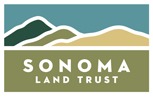
Unpacking 30x30, California’s part in a global movement
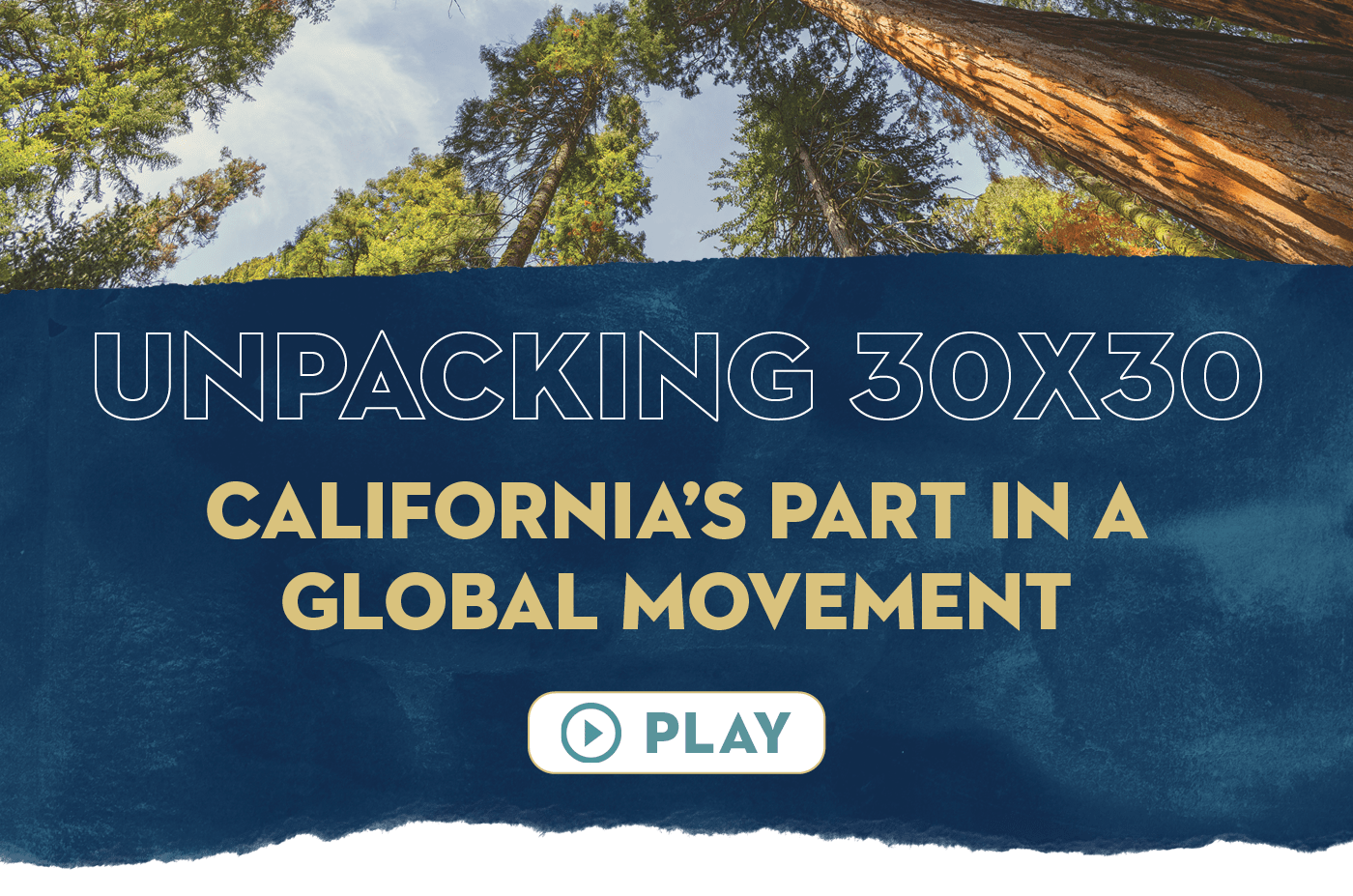
Severe weather is becoming more common in Sonoma County. We’ve lived through wildfires, droughts, extreme heat, and flooding, and are noticing an increase in wild animals visiting our urban areas.
The good news is that we understand what is causing these changes and have the tools to address many of these root causes while adapting to what we cannot control.
In 2015, climate concerns prompted the adoption of the Paris Agreement, which coordinated global action among governments, corporations, cities, and citizens to limit global warming to 1.5 degrees Celsius. In 2018, more than 300 experts released the National Climate Assessment (NCA) which not only identified compelling evidence of the changing climate across all 50 states but identified 12 main areas to focus their strategic planning.
In April 2019, a group of scientists published the A Global Deal for Nature: Guiding Principles, Milestones, and Targets.(GDN) with what they felt was a more achievable goal of saving 30% of our lands and waters by 2030 (also known as 30×30) to curtail the extinction crisis, safeguard critical water and food supplies, absorb harmful carbon pollution, and reduce the risks of future pandemics and other global health emergencies. The GDN targets 30% of earth to be formally protected, and an additional 20% designated as climate stabilization areas, by 2030.
30×30 is viewed as a milestone toward the larger end goal of half of the planet protected by 2050.
California is a biodiversity rich hotspot with more native plant and animal species than any other state. It is also where 95% of our high-value crops such as fruits, vegetables and nuts are produced. In a 2020 executive order, Governor Gavin Newsom committed to the 30×30 initiative, and created a $768 million spending plan over for organizations and programs that will deliver climate benefits and protect biodiversity, including conservation acquisitions and easements. This commitment will go a long way in supporting Sonoma Land Trust and our partners in our conservation efforts and highlights the importance of this work to the global effort.
Preserving 30% of our land within the next seven years may seem like a huge undertaking, but land trusts have been working to conserve and restore our land for decades – and are really good at it!
Combined, land trusts have conserved 60 million acres – that is more than the land-base of all of the National Parks combined!
While we already have a good start to reaching 30×30 in California, an additional six million acres of land in California still needs to be placed under conservation by 2030. Additionally, the nine counties making up the San Francisco Bay Area have a conservation goal of 50% by 2050. Approximately 25% of the region’s 4.4 million acres are permanently preserved. Bay Area Greenprint shows the percentage of our land under protection, and the critical areas where land trusts and other conservation organizations can focus our attention.
Sonoma Land Trust is working directly to contribute to 30×30 with projects and programs prioritizing the most threatened species and habitat areas in the county. As an important biodiversity hotspot with a high concentration of endemic species, such as the Pitkin Marsh Lily and Sonoma Sunshine plant, approximately 22% of Sonoma County lands are currently protected. Thanks to decades of work by us and other conservation groups, we have protected 227,000 acres of parks, open space, and private landowner conservation easements (a voluntary legal agreement to keep land in private ownership while protecting key resources) in the county. We have a long history of biodiversity conservation and with land management programs on 17 nature preserves and hold 47 conservation easements to conserve the natural resources around us.
But, there is still more work to do – 78,000 acres in Sonoma County to be exact!
As a nation, the United States has a history of protecting its land and is one of the top four areas in the world with the most intact natural areas. To continue our leadership, President Biden issued a January 2021executive order to commit the nation to 30×30 goals. At the UN Biodiversity Conference in December 2022, 196 nations adopted a landmark agreement to protect 30% of the world by 2030, with goals of conserving and restoring lands and waters, and reducing the amounts of pollutants on our ecosystems.
Working together, we can safeguard and protect nature to ensure a viable future for us all. It is now more important than ever to support land trusts working to protect our lands, waters, and biodiversity.
Please contact your State Senator or Assemblymember and ask them to support robust funding for 30×30 by finding your representative here and a sample message here. To support Sonoma Land Trust in protecting the land forever, including monthly giving, planned giving, or donating land, visit our giving page. Thank you for being a force for nature!
Todo sobre 30x30, el papel de California en un movimiento global
El clima extremo es cada vez más frecuente en el condado de Sonoma. Hemos vivido incendios forestales, sequías, calor extremo e inundaciones, y estamos notando un aumento de animales salvajes que visitan nuestros vecindarios.
Pasos mundiales
En 2015, la preocupación por el clima impulsó la adopción del Acuerdo de París, que coordinó la acción mundial entre gobiernos, empresas, ciudades y ciudadanos para limitar el calentamiento global a 1,5 grados centígrados. En 2018, más de 300 expertos publicaron la Evaluación Nacional del Clima (NCA), lo que no solo compartió evidencia poderosa del cambio climático en los 50 estados, sino que identificó 12 áreas principales en las que centrar la planificación estratégica.
En abril de 2019, un grupo de científicos publicó A Global Deal for Nature: Guiding Principles, Milestones, and Targets (GDN), con lo que consideraron un objetivo más alcanzable de salvar el 30% de nuestras tierras y aguas para 2030 (también conocido como 30×30). El objetivo de la GDN es proteger el 30% de la Tierra y designar un 20% más como zonas de estabilización climática para 2030.
Como nación, los Estados Unidos cuenta con muchos años de protección de su territorio. Es una de las cuatro zonas del mundo con más áreas naturales intactas. Para continuar con nuestro liderazgo, el Presidente Biden emitió una orden ejecutiva en enero de 2021 para comprometer a la nación con los objetivos 30×30. En la Conferencia de la ONU sobre Biodiversidad celebrada en diciembre de 2022, 196 naciones adoptaron un acuerdo histórico para proteger el 30% del mundo para 2030, con objetivos de conservación y restauración de tierras y aguas, y de reducción de contaminantes en nuestros ecosistemas.
30×30 se considera un hito hacia el objetivo final más amplio de proteger la mitad del planeta para 2050.
El papel de California
California es un lugar que cuenta con mucha biodiversidad. Aquí viven más especies autóctonas de plantas y animales que todos los otros estados de EE. UU. Aquí también se produce el 95% de nuestros cultivos de alto valor, como frutas, verduras y frutos secos. En una orden ejecutiva de 2020, el gobernador Gavin Newsom se comprometió con la iniciativa 30×30 y creó un plan de gasto de 768 millones de dólares para organizaciones y programas que aportarán beneficios climáticos y protegerán la biodiversidad, incluidas adquisiciones y servidumbres de conservación. Este compromiso contribuirá en gran medida a apoyar a Sonoma Land Trust y a nuestros socios en nuestros esfuerzos de conservación y resalta la importancia de este trabajo dentro del esfuerzo global.
Conservar el 30% de nuestras tierras en los próximos siete años puede parecer una tarea enorme, pero los fideicomisos de tierras llevan décadas trabajando para conservar y restaurar nuestras tierras, ¡y lo hacen muy bien! Los fideicomisos de tierras han conservado 60 millones de acres, ¡más que todos los Parques Nacionales!
Aunque ya tenemos un buen comienzo para alcanzar el 30×30 en California, aún quedan por conservar otros seis millones de acres de tierra para 2030. Además, los nueve condados del Área de la Bahía de San Francisco tienen un objetivo de conservación del 50% para 2050. Aproximadamente el 25% de los 4,4 millones de acres de la región están conservados de forma permanente. Bay Area Greenprint muestra el porcentaje de nuestras tierras protegidas, y las áreas clave donde los fideicomisos de tierras y otras organizaciones de conservación pueden trabajar.
Sonoma Land Trust trabaja para contribuir al 30×30 con proyectos y programas que dan prioridad a las especies y zonas de hábitat más en peligro del condado. Como lugar que cuenta con una alta concentración de especies endémicas, (por ejemplo, el “Lirio del Pantano de Pitkin” y la “Planta del Sol de Sonoma”), aproximadamente el 22% de las tierras del condado de Sonoma están protegidas en este momento.
Tenemos una larga trayectoria de conservación de la biodiversidad y con programas de gestión de tierra en 17 reservas naturales. Mantenemos 47 servidumbres de conservación para conservar los recursos naturales que nos rodean.
Trabajando juntos, podemos cuidar y proteger la naturaleza para garantizar un futuro sano para todos. Es más importante que nunca apoyar a los fideicomisos de tierras que trabajan para proteger nuestras tierras, aguas y biodiversidad.
Póngase en contacto con su senador estatal o asambleísta. Pídales que apoyen una financiación sólida para el 30×30. Puede encontrar a su representante aquí y un ejemplo de mensaje aquí. Para apoyar a Sonoma Land Trust en la protección de la tierra para siempre, incluyendo donaciones mensuales, donaciones planificadas, o la donación de tierras, visite nuestra página de donaciones. ¡Gracias por ser una fuerza para la naturaleza!
A global road map to protect and restore nature
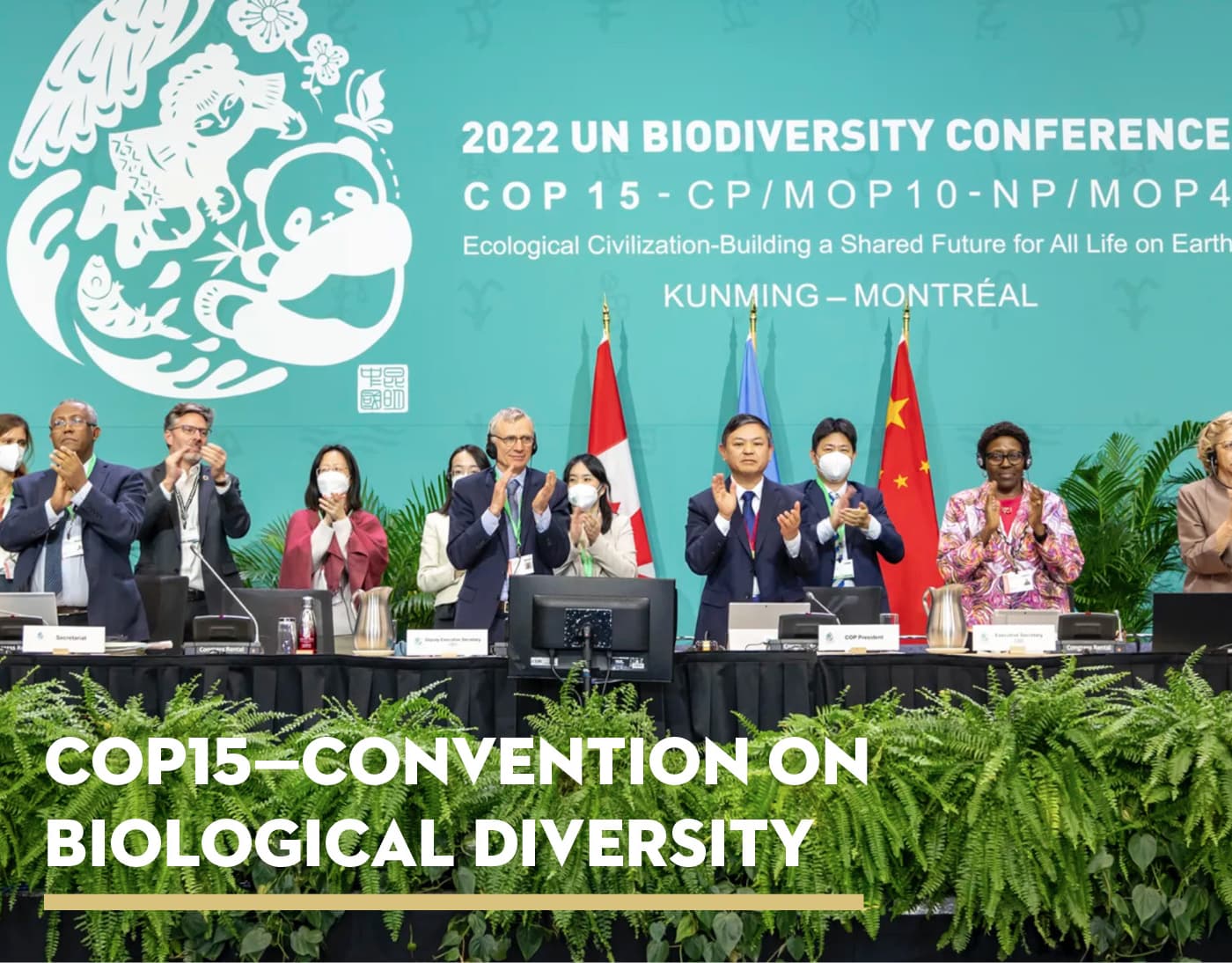
Protecting our planet’s living systems is a lot like saving for your kid’s college education. It is the promise that someday the investment you make now will provide benefits for them long into the future.
That’s exactly what, on a global scale, the recent 15th meeting of the Conference of Parties (COP) to the Convention on Biological Diversity (CBD) set out to do. COP15, as it’s otherwise known, is where world leaders gather to hammer out agreements for a bright, healthy future for all life on earth – including those college-bound children.
The Global Biodiversity Framework, the final agreement that emerged from COP15, provides real reasons for hope! There were passionate grassroots actions lead by youth, women, and indigenous people worldwide that brought the scale of destruction home to governments and corporations and, by doing so, has begun to force real change.
The plan that they agreed upon isn’t just smoke and mirrors either. For less than what the world spends on soda each year, we can fund this critical work. The global price tag is somewhere between US$ 722-967 billion each year over the next ten years. That puts the biodiversity financing gap at an average US$ 711 billion or between US$ 598-824 billion per year. And we can easily achieve 50% of this goal if we proactively reduce global subsidies on harmful economic activities such as fossil fuels (which got us into this mess) US$ 280-287 billion per year.
Having an agreed upon plan is a good start, having funding to execute the plan is essential!
Who made up the COP15 discussions?
The 196 countries who have signed on to the Convention on Biological Diversity (CDB) (created in 1992) debated the details of the plan and finally added their signatures to this historic agreement. The United States, being one of only two countries in the world that hasn’t ratified the 30-year-old Convention on Biological Diversity (the other being the Holy See), wasn’t able to participate in the signing of this agreement. Partisan gridlock has long prevented the US from signing international treaties, which need a two-thirds Senate majority. However, the US has appointed a special “biodiversity envoy” to constructively assist with the aims of COP15.
Timing is Everything!
The pace and scale of species loss has been intensified by climate change. Climate change and biodiversity are deeply intertwined and we can’t solve one without the other – biodiversity helps regulate the climate, and a healthy climate supports biodiversity. In fact, the biological mass (weight and quantity) of species across the globe has declined as much as 70% over the past 40 years and this loss is putting our future at risk. The causes – unchecked development, industrial-scale agriculture, overharvesting the oceans, pollution, invasive species, and unsustainable resource extraction, are all firmly within human control.
More importantly – biological diversity, having the full range of natural living things, is essential to sustaining life on Earth, including ours. Air, water, food, health, economic activity, and even human cultures all depend on functioning ecosystems that together create the rich and dynamic web of life around the globe.
Looking more closely at the plan
A major goal of the COP15 was to agree on global nature targets for 2030 and 2050. After some tense negotiations, four “overarching global” goals and 23 specific targets were included in the Kunming-Montreal Global Biodiversity Framework.
In short, the final agreement pledged to protect 30% of the world’s land and water for nature by 2030. If this sounds familiar, it’s because (thanks to conservation groups like Sonoma Land Trust and its supporters) California is a global leader in the effort to protect biodiversity and has already committed to the 30×30 goal.
California’s leadership will be essential for ensuring that the promises of COP15 are kept. That’s because our state is one of the 15 designated global biodiversity hotspots and has the 4th largest economy in the world. Sonoma County, nestled within this biodiversity hotspot, is a microcosm of how we can implement nature-based solutions for protecting and restoring life-giving natural systems while supporting a thriving economy.
We can mark a path for the rest of the world to follow!
Sonoma Land Trust is at the forefront of restoring wetlands to buffer the effects of sea-level rise, using good fire to limit catastrophic wildfires, and connecting landscapes to give species room to roam. Your support takes local action to a global movement that’s transforming our relationship to nature!
Join us in this work and be part of the movement.
What Sonoma County has planned for 30x30
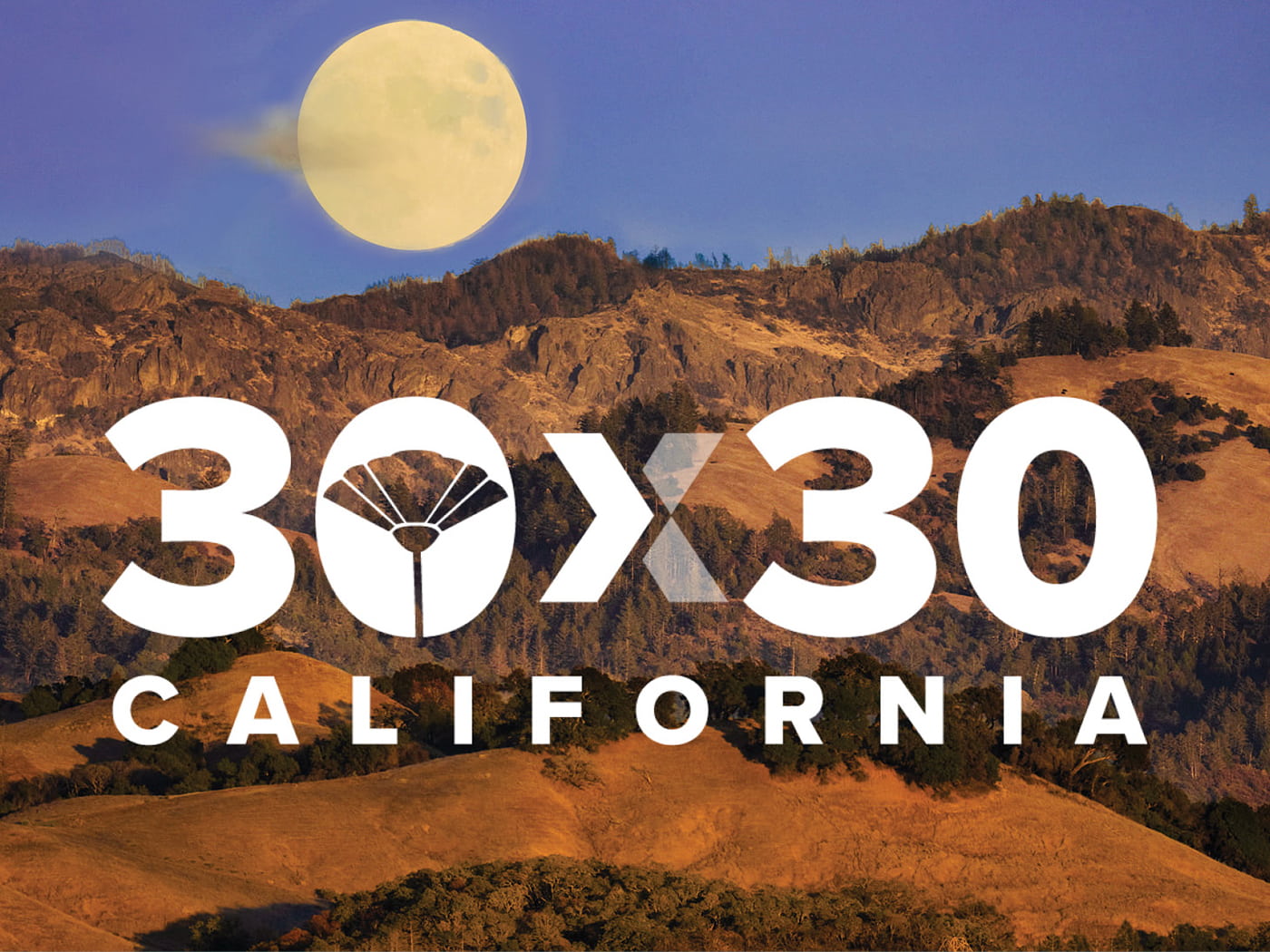
Photo: Ed Matney
It is without question that we should consider ourselves lucky to live in Sonoma County.
Our natural resources are vast, impressive, and rare. We share in the excitement when showing out of town guests our towering redwoods and dramatic coastline. The richness of our diverse climates and topographies makes it a place to easily fall in love with.
But the landscapes we love are changing rapidly, and our natural neighbors are imploring us to act quickly on their behalf. Without our help, the natural spaces and animals we all care for will reduce in numbers, deteriorate, and be lost to us forever.
Fortunately, our local county and city governments share a deep love and respect for the area and have committed resources to evaluating and protecting the health of our land, water, and environment through frameworks like the Sonoma County Climate Resilient Lands Strategy and Ag + Open Space’s Vital Lands Initiative.
Using a science-based approach, the County of Sonoma Climate Action and Resiliency Division and Sonoma County Ag + Open Space have crafted multi-year plans that work together to increase carbon sequestration, reduce climate risk, and enhance biodiversity, all with a shared commitment to equity and climate justice.
A principal objective of these strategies is to increase and connect the number of conserved lands in the county, and Sonoma Land Trust has been identified as a primary partner to accomplish this work.
Sonoma Land Trust’s work is valued as an integral component to the success of these initiatives and is essential to meeting the 30×30 goals for Sonoma County: to protect 78,000 acres in the next 7 years.
One example of Sonoma Land Trust’s involvement can be found in the Resilient Lands Strategy Project Concept K: Land Conservation for Climate Resilience (highlighted on page 177 of the Resilient Lands Strategy), a climate-smart land conservation case study which focused on our 200-acre Fitzsimmons Ranch acquisition in the Mayacamas. Buying this private cattle ranch and adding it to our park system ensures landscape connectivity on a property with significant topographic, geologic, and soil diversity that can accommodate habitat and range shifts for native species and provide much needed climate refuges.
Projects such as Fitzsimmons will increase key aspects of resiliency, provide migration pathways for animals and provide space for plant species to flourish in the face of increasing temperatures and extended droughts. They will increase the acreage of protected land to meet our 30×30 goals, expand habitat connectivity and corridors, and secure topographic and biogeographic diversity, all of which protect the fundamentals all life needs to survive.
The County’s resilience plans align with statewide efforts to engineer with nature, not against it. Using nature-based solutions, the plans support regenerative farming, attenuation of flooding to put more water into our aquifers, integration of prescribed fire as land management and resilient practices, and securing green spaces in urban areas for clean air and temperature regulation. Our strong partnership with the County and alignment with our focal strategies and donor support will help bring all of these plans to life.
Join us and help make lasting progress in conservation and restoration programs that promote healthy and equitable access to nature in our community.
To learn more about the Sonoma County Climate Resilient Lands Strategy, and to become a Sonoma Land Trust sustaining member who supports these vital solutions, visit give.sonomalandtrust.org
Thanks to your generosity, we have exceeded our goal!
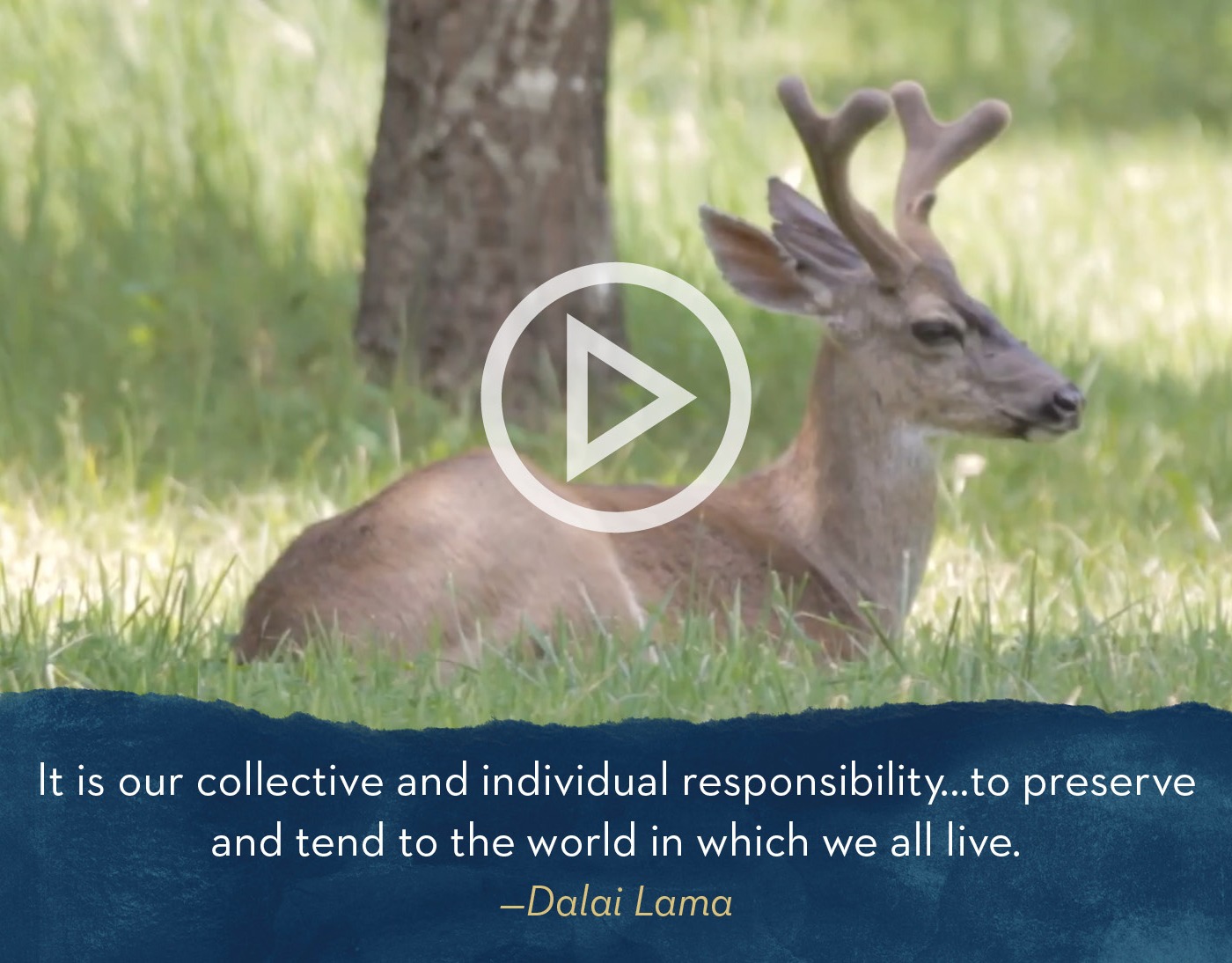
It’s so powerful to see what we can accomplish when we come together to help protect the land – for clean air, clean water, and healthy habitats. Whether you gave $5 or $5,000, gave your outdoorsy-friend a gift membership, included Sonoma Land Trust in your legacy plans, or made a special tribute gift in honor of a loved one – your support makes a remarkable, collective impact.
We’re happy to share that during the End-of-Year Challenge we raised $1,815,965 exceeding our goal! We are blown away by your generosity and take this as an affirmation of our work.
By becoming a force for nature, you’ve invested in natural solutions that will help Sonoma County address the climate challenges we face. Your financial support is combined with funding from friends, neighbors, and local government agencies to acquire land that buffers us against the impacts of flooding, wildfire, heatwaves, and drought. Thousands of land trust supporters like you have collectively saved more than 61 million acres of open space – that’s more than all of our National Parks combined!
We will be sharing our updated strategic plan in a couple of months where we lay out what is in store for the next five years. From expanding our conservation efforts to enhancing the health of the habitat on the land, our work benefits everyone and everything around us and there is no other investment you can make that can say that and mean it!
Thank you for supporting our work and for becoming A Force for Nature!
The following events are free and have been made possible by the voters of Sonoma County who fund the work of Ag + Open Space with a quarter-cent sales tax.
Events
Secrets of the Oak Woodlands
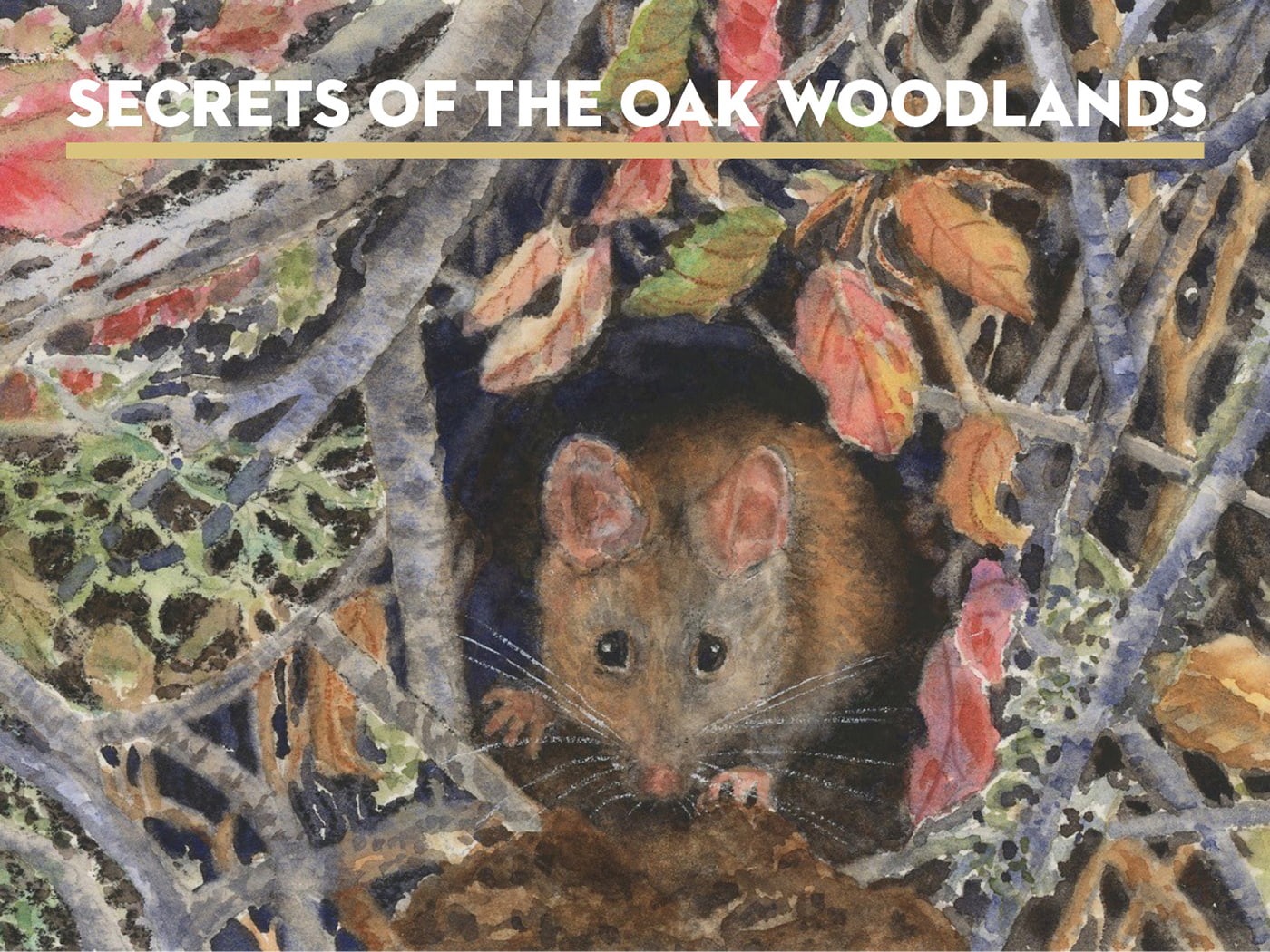
In a presentation illustrated with videos as well as photographs, author and naturalist Kate Marianchild will take us on a riveting tour of oak woodland trees and shrubs and the animals that can’t live without them.
Events
Chileno Valley Newt Brigade
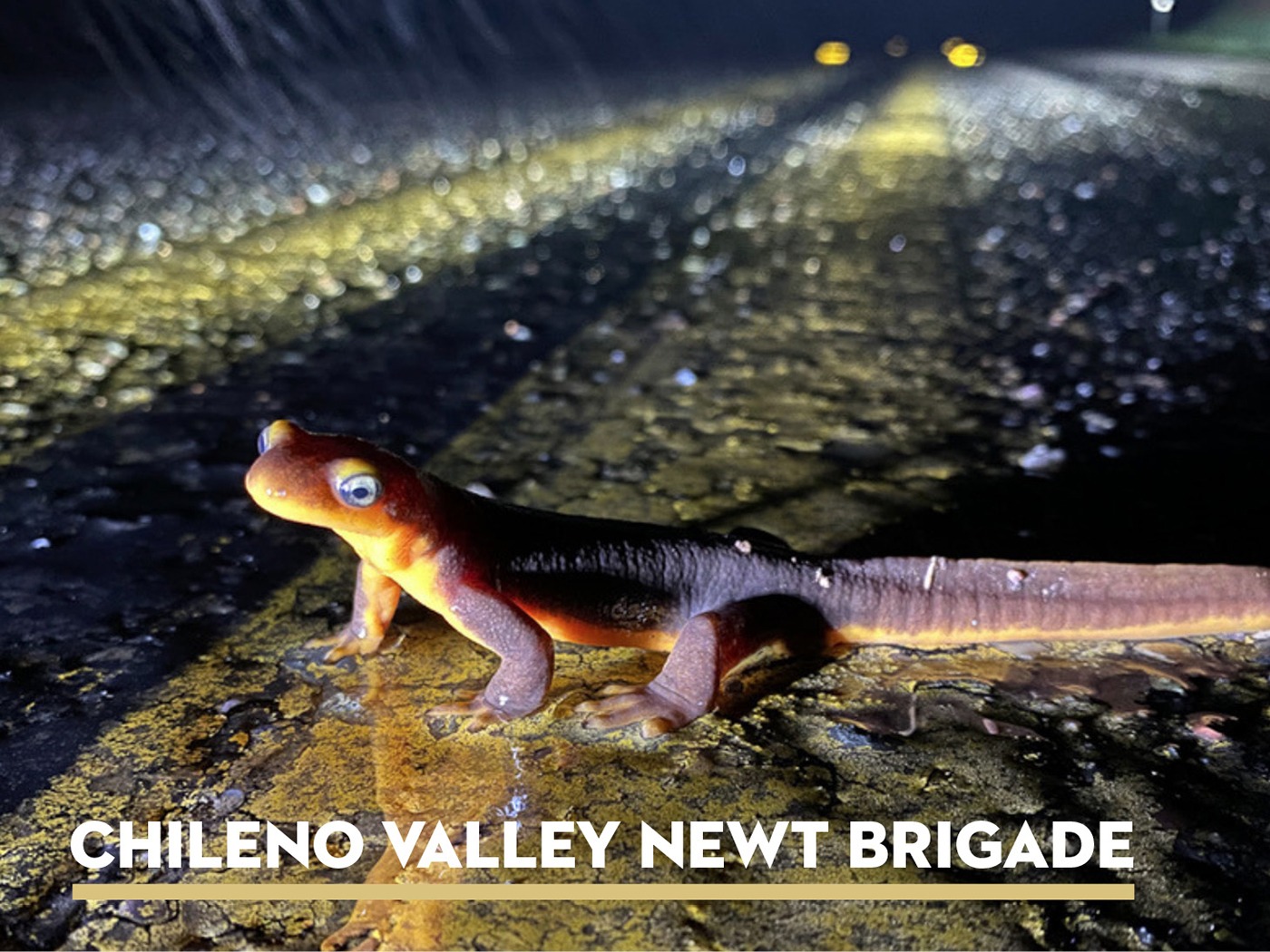
February 15, 7pm
Join members of the Chileno Valley Newt Brigade on Wednesday, February 15 to learn about this local volunteer group that is dedicated to helping the California Newts safely reach their breeding grounds. From December through March each year, thousands of slow-moving newts are at risk of being run over by vehicles while traversing the roadway that lies between their habitat and their destination. Volunteers spend nights in two-hour shifts watching for and helping the newts cross the road, so they can complete their journey to Laguna Lake and back. Ultimately, they are working toward long-term, science-based solutions to ensure safe passage.
Familias al Aire Libre / Families Outdoors Saturday
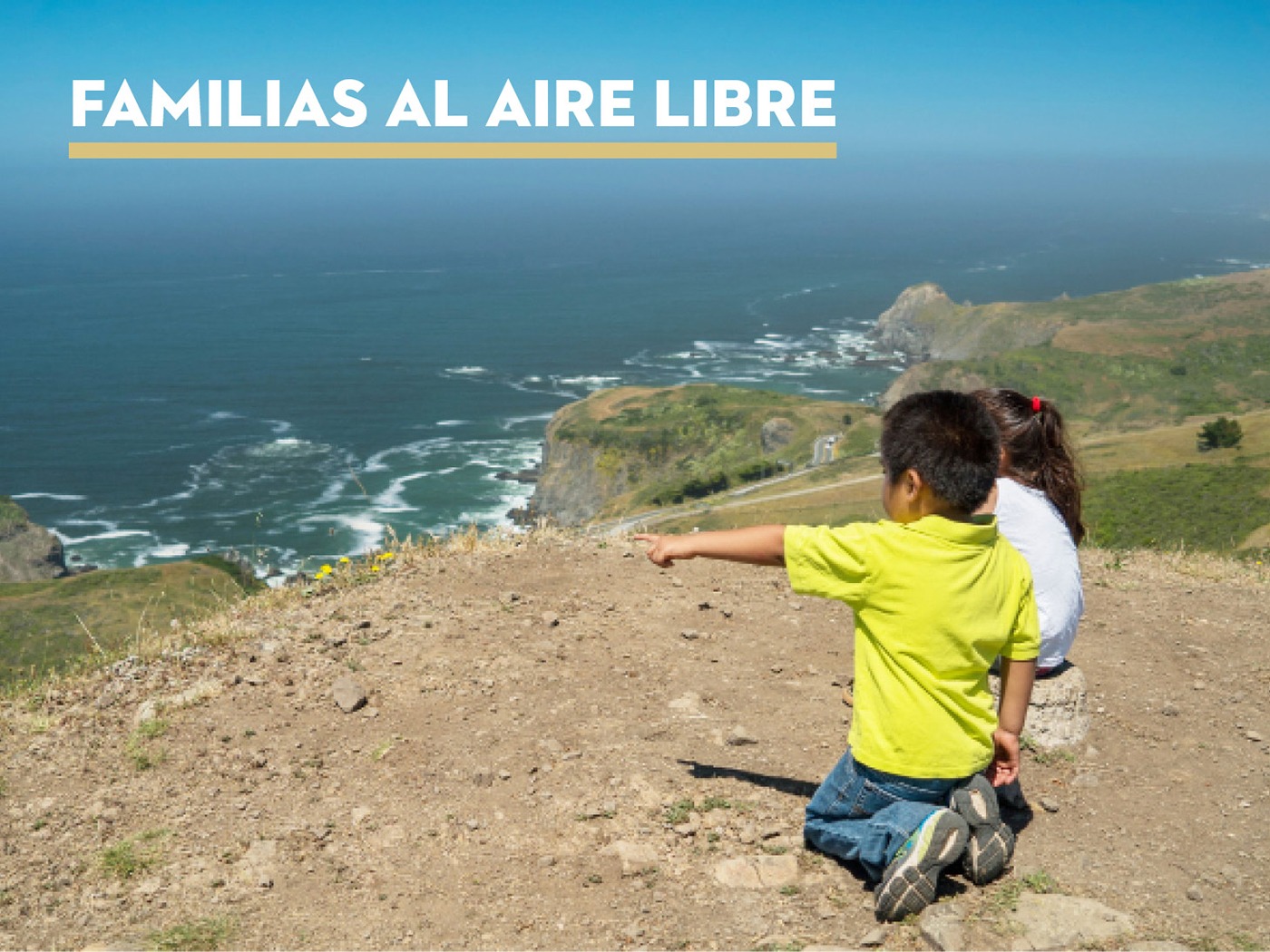
January 28, 10am–2pm
¡Acompáñenos para una caminata bilingüe para toda la familia! Cada mes visitaremos diferentes parques con guías que nos permiten ver la naturaleza decerca. ¡Es divertido para todas las edades!
Transportación: Los juntamos en Santa Rosa para ir en rumbo al parque en caravana. El transporte está disponible.
Para más información contacte a Tania: (707) 324-3525 | tania@sonomalandtrust.org
No hay cargo por estos eventos.
Join us for a bilingual family nature walk! Each month, we visit a different park with nature guides. Fun for all families! Transportation available.
Meet at 10am at 822 5th St. Santa Rosa, and we’ll caravan to the park together. There is no charge for this outing.
Flyway Festival Raptor Walk at Sears Point
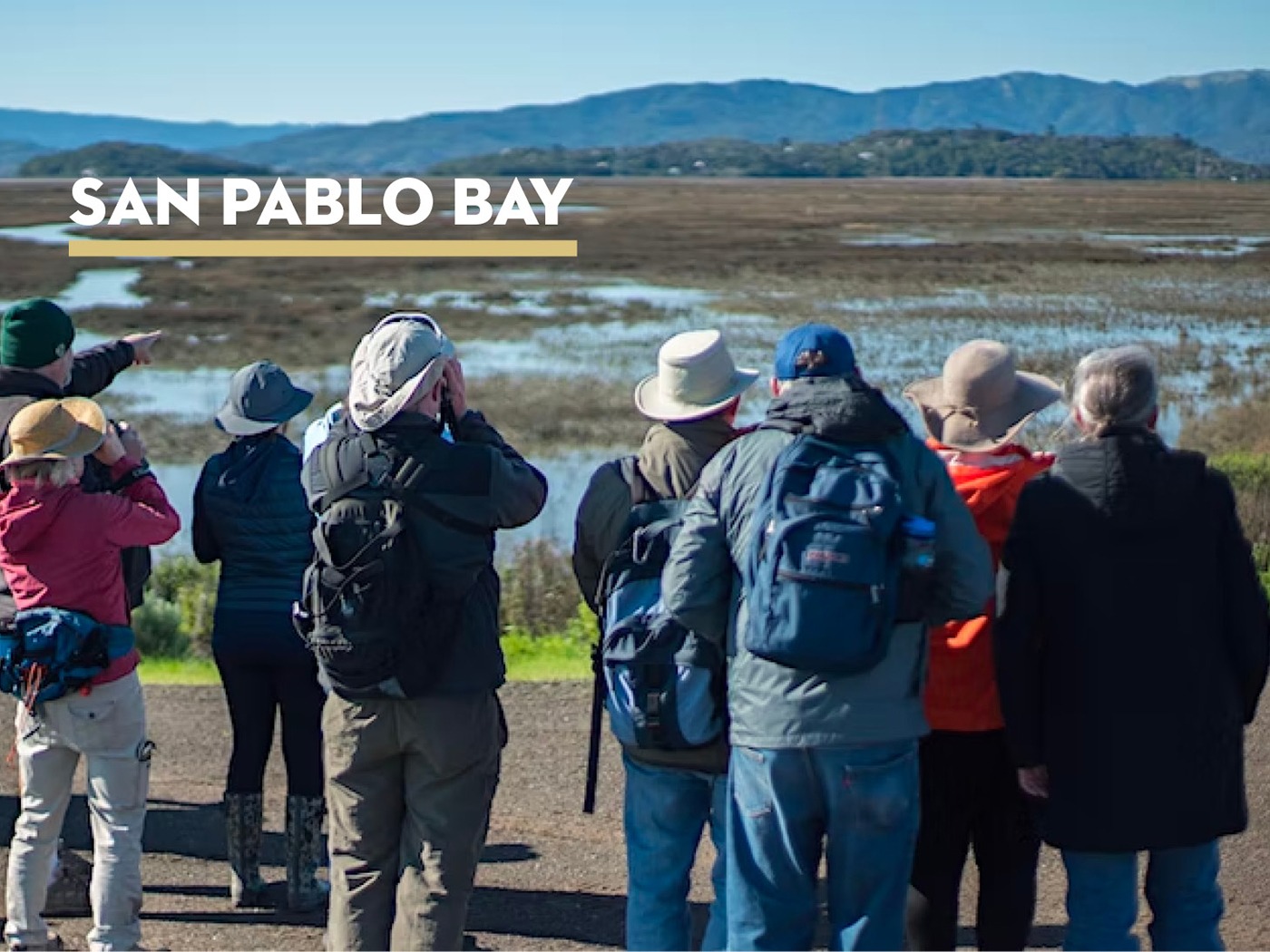
Sunday, February 12, 2023
Winter is a great time to see the birds on the San Pablo Bay. Celebrate the Flyway Festival with Sonoma Land Trust and raptor guide Larry Broderick on the Dickson Trail at the San Pablo Bay National Wildlife Refuge. Bring your binoculars and get to know the raptors and shorebirds along the bay.
Glen Oaks Ranch Walks
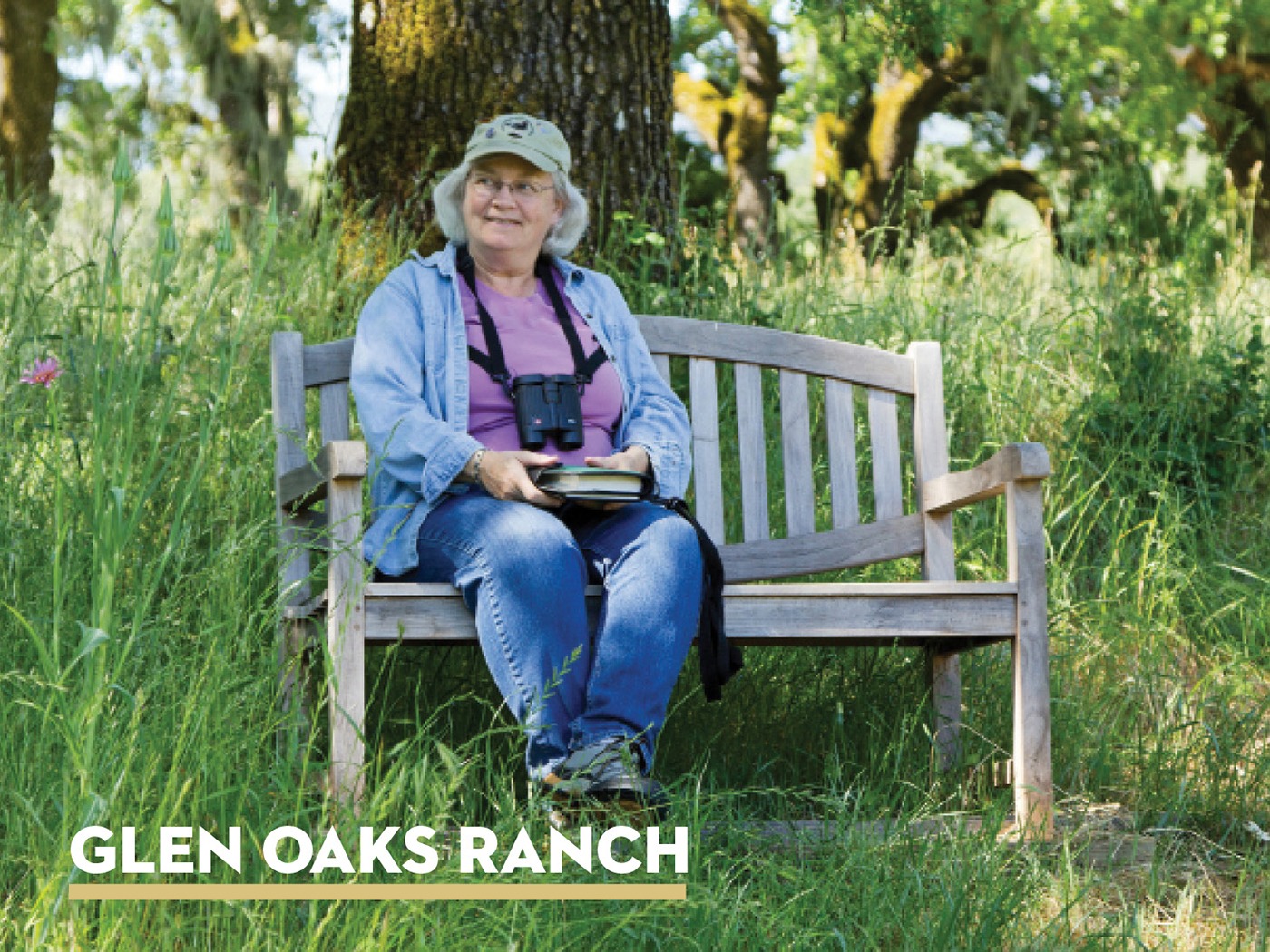
Saturday, February 4, 2023, 10am–2pm REGISTER
Sunday, February 26, 2023, 10am–2pm REGISTER
Join Sonoma Land Trust and Ag + Open Space for a hike at Glen Oaks Ranch — a historic ranch located in Sonoma Valley near Glen Ellen. February brings blooming manzanita and ceanothus to the landscape. We’ll also get to see the post-fire regrowth of an area that had a prescribed burn in the fall.
This 234-acre preserve was donated to Sonoma Land Trust in 2001. Sonoma County Ag + Open Space holds a conservation easement on this land, which designates three conservation zones — historic, agriculture and forever wild. This hike is approximately 3 miles with a 300-foot elevation gain.
Level: Moderate
Guided Virtual Hike up Pole Mountain
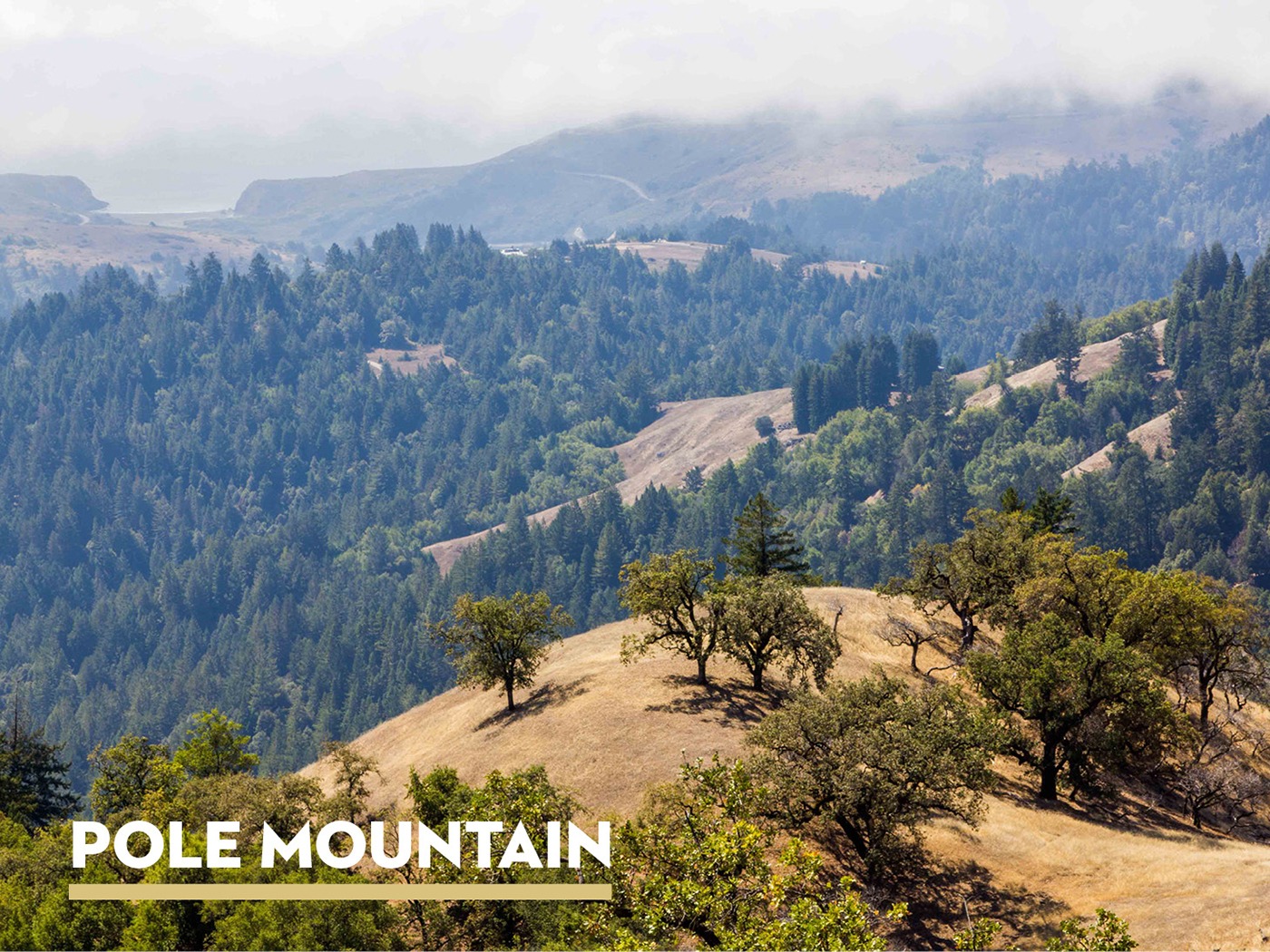
Thursday, February 23, 6–7pm (online only)
Join Sonoma Land Trust staff for a guided virtual nature experience of Pole Mountain, the highest point on the Sonoma Coast. You’ll enjoy a brilliant display of imagery as we guide you through the landscape on this 10-mile journey. Over the course of an hour, we’ll “hike” up the north side of Pole Mountain, reach the 2,204-foot summit for amazing 360-degree views, and then traverse the southern slopes, ending on the coastal bluffs of the Jenner Headlands.
Recommendations
Books: Half-Earth: Our Planet’s Fight for Life by Edward O. Wilson
Podcasts: The Daily: Consider the Burying Beetle (or else): The story behind the ambitious new goal to protect biodiversity
Webinar: Language of the Land 30×30
TED Talk: How to Find Joy in Climate Action | Ayana Elizabeth Johnson | TED
App: Seek by iNaturalist
